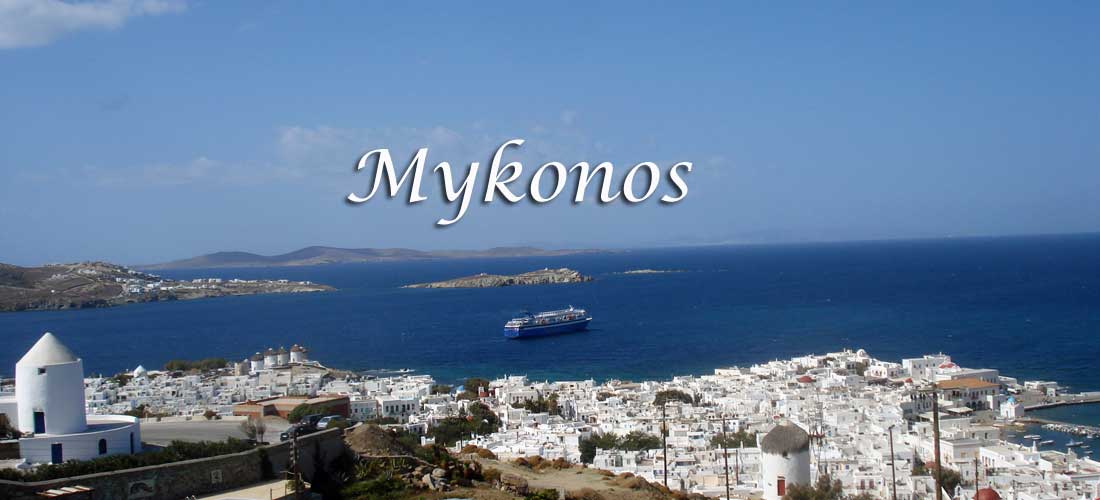Historical Overview of Mykonos
Archaeological findings indicate that Mykonos has been inhabited since the early Neolithic period. The island flourished during the early Cycladic civilization, around 3000-1100 BCE, as evidenced by remnants of ancient settlements and burial sites.
The island’s strategic location made it a vital center for trade and maritime activities in the Aegean Sea, facilitating interactions with other Cycladic islands and major civilizations such as the Minoans and Mycenaeans.
Cares and Phoenicians are said to have been the first inhabitants of Mykonos, but it was the Ionians from Athens who settled and dominated the island around 1000 BC, driving out the previous ones. It is reported that on the poor, albeit agricultural island, there were two cities, where Datis and Artaphernes camped in 490 BC.
Dionysus, Demeter, Zeus, Apollo, Poseidon and Herakles were the main figures of worship, while it passed from the hands of the Romans to those of the Byzantines and accordingly their religious customs were adopted. The latter carried out defense works against Arab pirates in the 7th century and kept the island under their control until the end of the 12th century.
Venetian rule and Ottoman rule
After the sad end of the Fourth Crusade at the expense of Byzantium in 1204, the island was granted to Andreas and Jeremiah Gizi (relatives of Doge Dandolos). In 1292 it appears to have been sacked by the Catalans and left to the direct control of the Venetians by the dying last Gizi in 1930.
Since then, it has been a single Venetian territorial possession with Tinos. During the Venetian rule, it was destroyed by Hayredin Barbarossa, admiral of Suleiman the Magnificent, in 1537
Under the Ottomans, it came under the jurisdiction of the commander of the Ottoman fleet, Capudan Pasha, and was almost self-governing according to the system of the time, having voivodes and commissioners, who try as they can to keep equal distances from Turks and Venetians (the latter permanently withdraw from the region with the surrender of Tinos to the Ottomans, in 1718).
Pre-revolutionary years
The population of Mykonos, which usually fluctuates between 2,000 and 5,000 souls in the most recent period, was reinforced more than once by parishioners, coming from Crete or the nearby islands of Naxos, Folegandros, Sikinos, Kimolos and others.
Main cause, famines and epidemics, as a consequence of frequent wars, until the end of the 18th – beginning of the 19th century. Due to its geographical location, the island is steadily emerging as an important supply station for foreign merchant ships.
The Mykonians at the same period, being considered good sailors, gradually engaged in shipping and commerce with success, having previously been suitably tested against piracy. Many actively participated in the revolt of the islands, known as “Orlovika” (1770 – 1974), which fortunately ended in favor of Catherine II of Russia and also of the islanders, judging by the favorable conditions for Greek trade that took place in the immediately following period .
Liberation struggle
During the Revolution of 1821, the Mykonians, led by the heroine of the island, Manto Mavrogenous, the offspring of a powerful aristocratic family and raised in Trieste with the ideas of the Enlightenment, actively contributed to the Struggle. They zealously repel an attack by a squadron of the Turkish fleet in the year 1822 and participate in the liberation struggle with four equipped ships, two of which Manto undertook to maintain at her own expense, squandering an important ancestral property.
19th – 20th century
With the establishment of the new Greek state, Mykonos sees the rebirth, within its social boundaries, of a dynamic bourgeois and petty bourgeois class. It cultivates special ties with southern Russia, mainly with Odessa and the cities of Crimea, Livorno in Italy and Marseille in France, Alexandria, Smyrna, Constantinople, but also with the rising Syros.
However, the complete prevalence of steam technology, towards the end of the 19th century, and the opening of the Corinth Canal, in 1904, took away much of its activity, as a result of which more and more Mykonians migrated in search of better fortune. Some abroad, initially in Russia until World War I and then in the United States of America, and more in the new urban centers of the interior such as Piraeus and Athens.
Demographic recovery will be observed again after the first economic struggles of Tourism, in the 1930s, and then its establishment as the main commercial service of the island. The archaeological excavations that had begun, since 1873, in Delos by the French Archaeological School of Athens, had highlighted the area very early on in the consciousness of the “elite” of people who had the comfort and desire to travel to Greece.
As mentioned above, as early as 1930, several famous people visited the island and discovered, along with the impressive antiquities of Delos, its own rare charms. With the rapid development of the tourism industry in southern Europe after the war, Mykonos efficiently assimilates the new data and, with the hard work, inimitable refinement and business sense of its people, claims one of the most enviable positions in the international tourism market.
